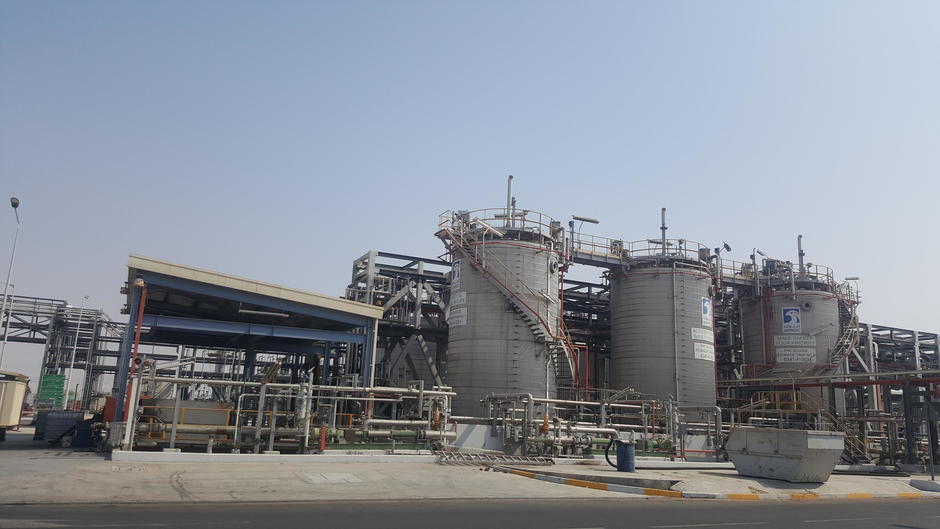About BeAAT
A facility dedicated to the treatment, storage, and safe disposal of hazardous liquid, sludge, and solid waste generated by ADNOC OpCo’s and various industries, The BeAAT Plant is equipped to handle a huge variety of waste streams from all ADNOC Operational Companies, and is committed to increasing its capacity by 2.5 times, up to circa 170,000 Tons/year, positioning itself as a leading service provider in the hazardous waste market in Abu Dhabi and the UAE.
Our operations strictly adhere to HSE Guidelines, employing effective technologies to safeguard the environment, workforce, and the general population. With a focus on sustainability, the BeAAT Plant promotes the recovery, recycling, and reuse of waste streams whenever practicable, ensuring the adequate protection of human health and the environment.
Our Process
Centrifugation
Petroleum Hydrocarbon Sludge such as tank bottoms, API Separator sludge, desalter sludges and sludges generated from cleaning processes are dewatered through centrifugation.
Thermal Desorption
Thermal desorption is a method used to treat dewatered Petroleum Hydro Carbon (PHC) sludge from centrifugation, as well as externally generated sludges - filter clays, contaminated soil, and drill cuttings. This process involves recovering oil from the treated waste, which can then be used in the incinerator

Incineration
The incinerator is designed to treat contaminated and hazardous industrial waste materials such as solid & liquid wastes, pyrophoric solids/liquids and sludge. These wastes undergo primary and secondary combustion processes to vaporize and oxidize the organic compounds, followed by flue gas treatment present in the waste material. Solid waste is fed through the grabber, hopper and inclined chute with double-tipping valves. Liquid wastes are pumped inside the incinerator through the liquid burner lances.

Physical Chemical Treatment
This unit treats acidic and alkaline waste, including liquid waste containing heavy metals, cyanides, fluorides, and ammonium. Chemicals used in the treatment process include Acid, Caustic, Lime, Ferrous Sulphate, and Sodium Hypochlorite. The neutralized effluent is then solidified for safe disposal.

Oil-water Separation
This unit is responsible for separating oil, water, and solids from oily water. The process involves using chemicals such as acid, caustic, coagulant, and flocculant.
After separation, the products are sent to different destinations:
- The oil goes to the recovered oil tank in the tank farm.
- The water goes to the process water tank for internal use.
- The sludge goes back to the incinerator.
Solidification
Solidification is a process that converts hazardous waste into physical and chemically stable product. The process is typically used to treat inorganic wastes containing heavy metals to convert them into a product suitable for Class 1 Landfill.

Engineered Landfill
BeAAT Hazardous waste landfills are engineered landfills according to US-EPA standards. The methods and materials used in the construction of the landfill ensure its integrity.
All types of the wastes, to be disposed of in the landfills, needs to pass certain tests described in USEPA SW-846 method 1311 (TCLP) and BeAAT Waste Transfer Protocol. It is the responsibility of the group companies to analyze and classify the waste before sending it to BeAAT site.
Stable hazardous wastes are deposited directly into on-site hazardous waste landfills. Water (called leachate, if any) that drips through the waste is trapped by the impermeable layers of HDPE liner, which is then collected and treated onsite. The landfill is managed by highly skilled personnel who ensure optimal operation by adhering to the international standards.


